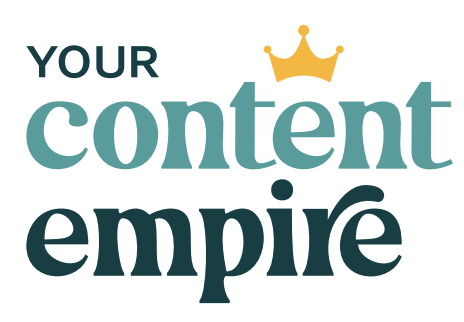Are you stuck at full capacity but afraid to raise your prices? One of my clients just ran a price raising campaign that converted at 35% – with mostly existing leads?
Today, I'm giving you my exact step-by-step campaign framework for raising your prices without losing clients. And the best part? You can implement this whether you're a coach, course creator, or service provider.
This isn't just about picking a new number – it's about creating an irresistible campaign that actually makes people excited to buy before your prices go up. I'll show you exactly how to segment your audience, craft your messaging, and time your campaign for maximum results.
Prefer to watch this video?
Want to listen to this on the go?
How to Know If It’s Time to Raise Your Prices
Pricing is one of the most nuanced decisions that you're going to have to make as a business owner. There's no secret formula, there's no textbook rule – as long as you're not losing money. There's also a lot of variation – when it comes to pricing different types of offers, which for online business owners are things like services, coaching, digital products, memberships, group programs.
There are 3 main ways to approach pricing (and a million different other ones too) but the main 3 are: Profit-based, conversion-based and positioning-based.
- Profit-based is the simplest equation of all. What are your costs to deliver this offer, how much time does it take you and/or your team to create or deliver it, what's the tax you pay on that revenue and what is your room for profit
- Conversion-based is based on “what will the market bear” principle. Is your offer actually converting too high? Especially for a service-based business, you should be getting no's. If you're converting at 50% or higher, it might be a sign you could raise your prices. If you're not making enough sales, before you do the reverse and lower prices though, make sure you're fully vetted and tested your messaging.
- Positioning-based is the market research approach. What are other businesses with similar offers, similar customers charging? And where do you want to be positioned brand-wise in relation to those other solutions? Top of the market? Mid-range? Or, hopefully not, bargain basement?
As you can probably tell, services are a little more straightforward when it comes to pricing. But what about digital products, courses and group programs? Especially the things that don't really have an ongoing cost of delivery (it's the same amount of time and money whether you sell 2 or 20 or 200 or 2000). Because while there are costs associated with hosting and selling products, these are usually minimal when divided between all the sales so that's not a great option to base it off of. Likely, you'll want to base it off the value it brings customers (what's it worth to them) plus the level of your involvement/support they get and more often than not it's going to based on what the market will bear (or what your customer is willing and able to pay) – so likely market research and positioning based.
So if you've determined, it's time to raise those prices—how do you go about it in a strategic way?
Introducing: The Price Raising Campaign
The first thing I want you to do is embrace the idea of raising your prices as a campaign. It's a reason for your customers to buy your offer.
“Price is going up, get in now if you've been thinking about it.”
We've used this strategy with some of my favourite marketing clients – in particular, my coaches who run these a few times a year. For every single one of them, between these campaigns and their clients sending them referrals, they don't really have to do anything else to stay booked out (although obviously they do, because they have our help to use their marketing to fill courses and group programs and stay top of mind 24/7 with their marketing).
The number one thing you can do to sell more, besides nailing your messaging which we're going to get to in a sec, is have an authentic reason for someone to take action. Natural urgency is your friend and raising your prices is some of the best of the best.
So two for two? You're raising your prices – check. And you're going to make a campaign – check.
Step 1: Designing Your Price Raising Campaign
Once you've made the decision, it's time to make some more decisions (isn't being a business owner fun) – starting with:
- What are your prices increasing to?
- When are your prices increasing?
- Will you raise prices for existing clients or just new clients moving forward?
- Are you adding anything to the program, product or service along with increasing the price? If so, what and why is it a win for your customers?
So when it comes to deciding what to increase your prices to, keep this in mind: smaller, more frequent price increases are often more effective than making a big price jump. Especially if your clients or customers look up to you and part of the reason they want to work with you is because you're a few (or more) steps ahead of them in their journey and they want to emulate part of that success for themselves, raising your prices can be really inspiring to them. Plus it gives more opportunities for these price increase campaigns leading to an influx of clients and customers.
For, whether or not to raise prices with existing clients/customers or just new clients moving forward, I'm personally a fan of someone locking in at the price they signed up with. The exception would be if it's a service package or if there's a reason for the price increase, like I'm adding new features.
In terms of what to add, I'll share an example. A current client of mine run a 6-month group program. She has a limited number of spots and most of the spots are taken by the same people signing up again and again (they're given first dibs). She decided she wanted to raise the price but was nervous about alienating her existing members when they rejoined. So she decided to add one Voxer day per month for the group as a value add to go along with the price increase (plus give continuing members a slight discount on the new price).
Step 2: Identifying Your Audience Segments
The next piece of this strategy is to identify as many different segments in your audience as possible. I think this is really what separates an okay launch strategy from a high-converting. Where can we tailor your messaging and outreach strategy based on the prior actions of your audience?
Here's an example from a recent price raising campaign: We ended up identifying 4 different segments:
- Prior inquiries (people who'd had sales calls about the offer and either didn't respond or didn't move forward)
- People who'd clicked on the salespage from emails in the past year
- People who'd downloaded freebies related to the offer
- And then the rest of the email list
Most of the messaging stays the same but there are some slight variations that makes it a bit more personalized, plus for the warmest leads (past inquiries) we added in direct outreach to tailor it even more which ended up converting at over 35%
Step 3: Your Price Raising Campaign Messaging
Finally, it's time to create the content and run your campaign.
Let's start with messaging. Here are 6 questions to answer:
- Why are you raising your prices? What's a good reason for it from the perspective of your audience? (it could be something you're adding, it could be the track record and results clients have seen)
- Speaking of results – who's your star customer? What's their story – their starting place, journey and results? A juicy testimonial demonstrating this in their words? Or a visual case study, show and don't tell style?
- Speaking of journey – what's the high-level how of this offer? Why is each major piece of the offer an essential part? What are the payoffs (the results) people can expect from this offer/journey?
- What makes this offer different from other solutions on the marketplace? Someone I really admire and love the work of, is Shenee Howard, and she explained this as, your audience has likely kissed a lot of frogs before getting to your offer? Why is your offer “the one” when the other ones definitely weren't?
- What's a very strong objection that your audience has – not towards the offer – but to believing that it's possible to reach the goal or solve the problem the offer helps with? What's emotionally or mentally holding them back? And how can you reframe that objection and show how the offer design is designed to help overcome this?
- Finally – is there a special or extra perk that comes along with this offer that takes the value over the edge? Romanticize that element and what payoffs or results it'll help bring about from the main offer quicker, more easily or bigger.
Once you have your answers (aka your messaging for the campaign), let's create your campaign plan.
First off, turn each of these messages into both an email, a social media post and an image/video.
Then create your campaign communications plan. For each message, what date will you send it out, what channels will you post it on and how will you tailor it for the specific audience segments you identified?
Step 4: Running Your Price-Raising Campaign
Now what is arguably the easiest part, running your campaign.
Here’s your checklist:
- Schedule your emails.
- Schedule your social media posts.
- Set reminders for your personalized outreach.
- Work the plan.
- On the final day or 2 before you raise your prices, go through your email service providers and identify your top clickers and do even more personal outreach.
Then when your campaign is over, do a review of the results and raise your prices on your website.
So what’s next?
Want my eyes on your current marketing efforts and a personalized roadmap forward? That's exactly why I've created the “What Got You Here Won't Get You There” Marketing Review. I'll analyze what's working, what needs tweaking, and identify at least three specific opportunities you can implement right away to adapt to this new marketing landscape.
No fluff, no generic advice—just practical, actionable insights delivered within 2 business days. Because while marketing might be getting harder, having a clear path forward makes all the difference.
Ready to turn these challenges into opportunities? Grab the link here to get your marketing review and let's make sure your strategy is built for today's reality, not yesterday's playbook.












